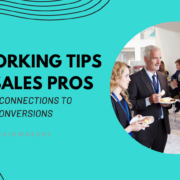What Does “BANT” Mean In Sales?
BANT Explained
The professional world of sales is filled with acronyms and terms that are used for the sake of brevity and efficiency. Each industry has its own unique set of acronyms that stand for different things. Sales is no different. Allow me to start with BANT.
What is BANT?
BANT stands for Budget, Authority, Need, and Timeline. It was first developed at IBM some time ago and has since revolutionized how people sell, particularly in the software industry.
It became so popular because it was a simple framework by which anyone could quickly and reasonably accurately qualify their sales opportunities. By ensuring that reps could pull the necessary information and identify 3 of the four items in this criterion, sales managers could be confident that the situation was indeed a genuine opportunity with a strong likelihood of closing.

B – Budget
Suppose a prospect was to inform you as a rep that they have already set aside a budget for the initiative at hand. In that case, it’s a strong indicator that the company is serious about making something happen. Of course, whether that business opportunity is brought to your company is an entirely different story. Still, at the very least, you know that the target account has the necessary funds if all things align.
You might think that the ideal sales situation always has identified a budget. But, unfortunately, it’s not quite that simple. Having a budget before engagement means that there is a serious consideration, but there are external factors you also need to consider.
For example, having a budget set means the prospect has already put a price in their mind on how much they value your particular product or service. Furthermore, if they already have a pre-determined budget, it’s likely been set due to their engagement with another vendor. Of course, this is not a guar,antee but tely a possibility.
A – Authority
Having authority in this process means that t you, as the rep, have identified the stakeholders, decision-makers, and financial signers for this initiative. Within the occasion, I often separate these individuals, especially in a larger organization, who are different people.
For example, when a company is looking to bring on a new tool for their sales team, the stakeholders are the members of that sales team, as they will be the ones using the tool day in and day out. So if the tool that’s brought on board happens to be ineffective or has a horrible user experience, they are the ones that are going to have to stuff, er and as so understandable, ly they have a massive stake in the evaluation.
Having a massive stake in the decision does not make them the decision maker. There is always someone who needs to approve the decision,n; someone to give the final okay before everything is finalized and agreed upon. The decision maker may be a group of people but usually managers, directors, or other executives in the organization.
A decision maker’s signature will be necessary to complete the deal, but more importantly, you’ll also need the signature of someone in charge of finances to finalize any paperwork. Depending on the organization, the decision maker may also be the financial signer; that is, they’ve been given authority over finances, but more often than not, this is likely to be a different person who sits in the finance department.

N – Need
Now to move on to the need. Understanding the need of an organization is to understand its situation and challenges. In essence, this is the why behind the initiative. What is motivating them to pursue your product or services? Why are they choosing to engage with you now?
Are they just kicking the tires because it seems to be the new industry trend? Or is it perhaps in response to some incident that has recently occurred within their organization?
Whatever the motivating factor is, it’s essential for you as a sales rep to identify what it is. This can be considered one of the most critical factors of this criterion as it will give you the most power in being a successfully persuasive sales professional. The stronger their motivation, the more control you have to sell without a discount or push for a quicker sale. Maybe even both.
T – Timeline
Having a timeline means that you have spoken with the prospect, and they’ve mentioned a specific date they’d like to decide or finish implementation.
This is perhaps the second most potent factor of this criterion, as it’s another lever you can use to speed up your current sales cycle. If ever you feel as though the progress in the sales process is slowing down, you can kindly remind your prospect of their goal to have the solution or service implemented by a specific date.
From there, you can work backward to illustrate what groundwork needs to be laid out for you guys to meet their given timeline. But, again, the keyword here is their timeline. This is not a time frame that you, as a rep, are imposing on them but rather one they’ve divulged to you for whatever reason.
Your power now comes from being a diligent consultant working to help your prospects better achieve their goals.
Conclusion: BANT
Hopefully, this quick overview of the BANT qualification criteria has helped help you understand how you can better qualify for your opportunities. Of course, it’s likely something you are already using for your day-to-day work, but perhaps this has given you some deeper insights as to why this qualification method has become such an industry standard.
-Dean Park
Dean Park is a seasoned tech sales professional with a wide range of organizations, from startups to enterprise businesses. Dean is also a sales mentor at GrowthX Academy in San Francisco.
Get high paying Account Executive sales jobs at Rainmakers!












Trackbacks & Pingbacks
[…] all been well. Here is Part 2 of our sales acronym series. If you haven’t already checked out Part 1 of the series go ahead and check it out. We went over the meaning of BANT and why it is an […]